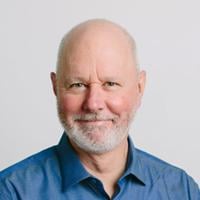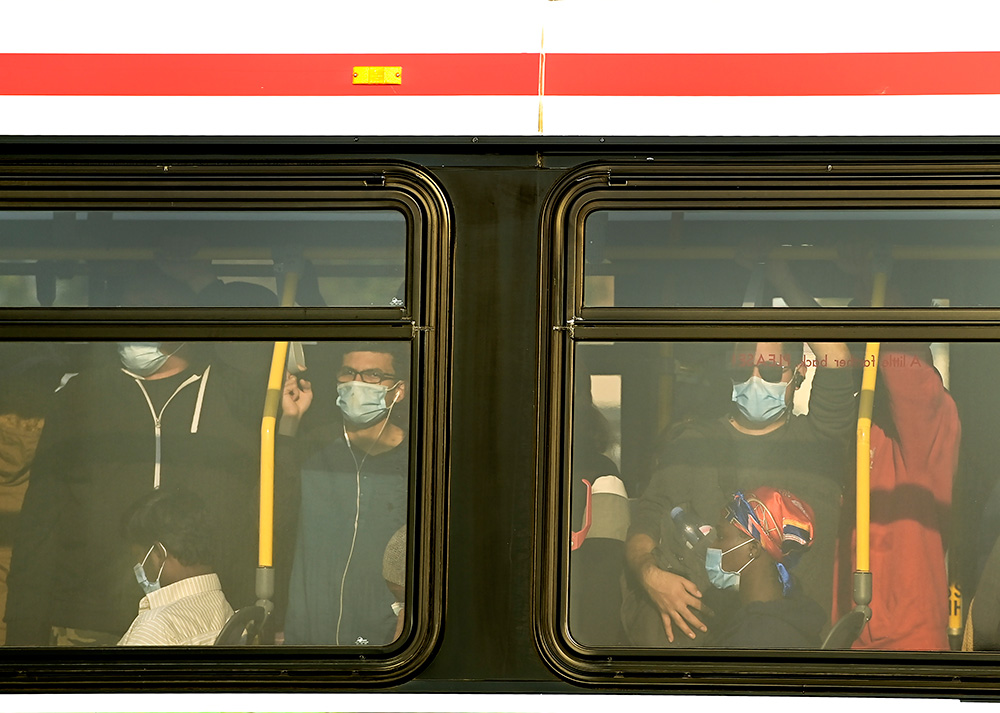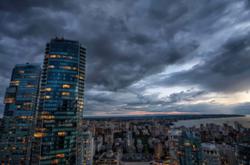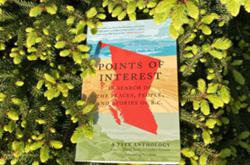- Sick City: Disease, Race, Inequality and Urban Land
- Creative Commons (2021)
Patrick Condon looks at those hit hardest by the pandemic and concludes, as have many others, that COVID-19 has starkly exposed and exploited inequalities in our society. Essential workers, many of them immigrants, risking their health often for minimum wage, are bearing the brunt. And their exposure to the virus puts others at risk, most dramatically the elderly in long-term care.
But Condon takes his analysis a level deeper. Underlying this map of inequity is one key factor — the cost of land. Where land spirals upwards in value, housing, no matter how efficiently constructed, can’t be made affordable if left to market forces.
And so, as the title of his book signals, there’s a recipe for sickness in how we zone, tax and otherwise regulate our city-building. Interconnected are “disease, race, inequality and urban land.”
Condon, a professor of urban design at the University of British Columbia, dived into writing his latest book after COVID-19 hit his own city of Vancouver. He decided to self-publish it in order to keep it timely. In the last municipal election, he ran for mayor of Vancouver under the COPE banner before dropping out for health reasons, and he has been a regular commentator on urban policy in The Tyee for years. So readers may recognize his diagnoses and prescriptions for what ails us.
Condon starts with the fact that the value of urban real estate has become detached from local incomes, because as global elites acquire and concentrate wealth, they seek places to park it. Condos are the new stocks and bonds and Krugerrands, and that gives all the more impetus to a species well known in these parts — the land speculator.
In the face of such forces, merely relying on the market to solve housing unaffordability is pointless, argues Condon, because as soon as land is upzoned for densification its value rises, those costs jacking up the price of units. Tinkering towards more “livable” neighbourhoods with better public amenities just further accelerates the cost of housing, turbocharging gentrification.
Remember Richard Florida, avatar of the “creative class” who preached such “regeneration” of bland or run-down locales? As the Guardian noted in 2017: “Fifteen years on, it hasn’t quite turned out as he planned. Florida’s formula has proven to benefit the already rich, mostly white middle class; fuel rampant property speculation; displace the bohemians he so fetishized; and see the problems that once plagued the inner cities simply move out to the suburbs.”
Overlaying that map onto the pandemic, Condon’s primary focus is the U.S., our neighbour so battered by the coronavirus and so divided along racial, spatial and financial lines. The fact that “poorly paid frontline workers… cannot live close to work” endangers them “through long commutes and exposed workplaces. Immigrant families crowd a dozen people into overpriced rental units, spreading disease both in their homes and in their neighbourhoods,” he writes.
For Condon, the distribution of COVID-19 is all about the distribution of humane and affordable space. But in this book the urban designer steps away from offering diagrams of neighbourhoods more dense, walkable, green. His cure resides in the flow of money and policies to reroute it. Condon channels the spirit of the 19th-century American political economist Henry George, whose basic premise is that much wealth generated by capitalist enterprise ends up sucked back into the price of land, and so the landowner is a king who must be deposed. Or at least tamed.
All efforts to make cities more inclusive, and therefore more healthy, must focus on beating back land inflation, argues Condon. In eight easily absorbed chapters, he traces two centuries of U.S. racial disparities to skewed land ownership, contrasts North American affordable housing policies with Vienna’s radically different model of public investment, and offers policy solutions for our own cities, but of the kind we aren’t hearing about from our politicians.
They include increasing taxes on land, which Condon counterintuitively argues would make housing more affordable. If speculators know their windfalls will be whacked by taxes they won’t buy and flip property, so land will remain cheaper and whatever does get built won’t reflect inflated costs.
He also proposes zoning that mandates below-market housing be built as a certain percentage of any new development, an approach tried in different forms in Portland, Oregon and Cambridge, Massachusetts.
Of course, such policies directly gore the ox otherwise named the real estate industry, a demanding beast that politicians enrage at their extreme peril.
The Tyee recently spoke via email with Condon about the provocative ideas in his book and the reaction it is getting. Here is our discussion.
The Tyee: Your book has received some attention in California. What is the housing issue there? Who is citing your analysis and why?
Patrick Condon: The housing issue in California is the same one as we have here: out-of-control land price inflation. Although ours is worse, because our salaries are much lower on average making it much harder for people making average incomes to afford homes. Urban land prices have shot up between 200 and 500 per cent in most parts of the Bay Area in just the past seven years. This is reflected, naturally enough, in higher home prices statewide.
So here is the controversy that I got dragged into. The California legislature, in an attempt to reduce home prices, is considering a law, SB9, that would overrule city zoning laws statewide, allowing much higher density everywhere in the state. YIMBY (“Yes in my backyard”) advocates and the big tech companies are all for it, arguing that opening up low-density areas for higher density will lead to lower prices. They reason that homes cost too much is because too few are getting built. That is, if you add enough supply to satisfy demand it will lead to lower prices.
This is where my new book comes in. I and many others are arguing that the evidence does not support this. Certainly here in Vancouver we have seen no evidence of this. We have added enough housing in the downtown for 40,000 new residents, prices go up. We have added thousands of units along our arterial streets, prices go up. We have legalized secondary suites citywide, prices go up. We have legalized lane houses, prices go up. We have allowed four dwelling units on every so-called single-family lot in the city, prices still go up. We have added more housing units than population over the past 10 years and prices have doubled. Over 20 per cent just this year.
So if it’s not constrained supply of housing that is causing prices to rise, what is? It is the constrained supply of urban land. They just ain’t making any more of it. And tragically, when you allow additional density on a piece of land it does not reduce the price of the home. The price of land shoots up, and with it the price of each interior square foot of the homes. Increasing the price of the land benefits only the landowner, not the buyer or renter.
California is only just starting to legislate new density, so they don’t have the benefit of our experience on this problem. So that’s where my book comes in. I show that the problem is land price, not house price, and if you want to make housing more affordable you need to manage land price somehow, and I show how that can be done.
California neighbourhood associations who oppose losing local control over planning have found my book and are using the arguments contained in it to block SB9. For me, this is not entirely comfortable. I have been arguing for affordable housing all my life. But here I find myself a weapon against advocates, the YIMBYs, for affordable housing. It’s just that I no longer believe in the so-called “laws of supply and demand” with regard to housing. The market for urban land is the problem, not the number of housing units produced. Adding new density just inflates land price and enriches land speculators.
How does your book apply to Vancouver? Usually it’s near the top of most livable lists. Is Vancouver becoming healthier or sicker by the definitions in your book?
Sicker, much sicker. We don’t have the same racial segregation as found in the U.S., but our economic segregation is getting worse and worse. The gap between average home price and average wages is wider in Vancouver than anyplace except Hong Kong. This is forcing our lower-income service workers out of Vancouver into slightly more affordable locations, forcing our hospital orderlies, our food service workers, cab and bus drivers, and frontline grocery store employees to travel unnecessary hours to and from work each day. Vancouver, as recently as 1990, had the region’s largest share of moderate to low-income workers housed within its boundaries. Now they are mostly in Surrey.
Vancouver is a great place to live if you have money. But if you are under 40 and would like a secure place to raise a family, and you don’t have access to “the bank of mom and dad” for a big down payment, you are out of luck. It’s ridiculous to call Vancouver “livable” if no one can afford to live here. It’s ridiculous to call Vancouver the “greenest city” if half of our workforce has to drive for hours in polluting vehicles twice a day, fouling the confined airshed of the eastern end of the valley. It would be far better, and cheaper and greener, to find a way to keep our crucial service sector employees here in Vancouver, instead of spending billions on bridges and subways to get them in and out each day. Housing should be seen as infrastructure, not just subways and bridges.
But we’ve seen initiatives from Vancouver city hall aimed at affordability. The mayor proudly states that more rentals — many affordable for households making under $80,000 — are being built as a result.
I just don’t think that thinking has caught up with reality. Most of the new rentals require incomes more like $120,000 and above. The idea that it’s a good thing to have lots of new high-priced “market rentals” is driven by the “trickle down” theory of housing, which is just another form of faith in supply and demand.
The thinking is that if you build enough new expensive rental units it will free up the cheaper units in a process called “filtering” — one new high price unit frees up a moderate priced unit, which then frees up a low-price unit and so forth. But sadly, we see no evidence of that in Vancouver.
Under Vision Vancouver and now this mayor, we have seen a very large increase in the number of new rental units produced. Vacancy rates are going up and are very high in the new “luxury” units. But rents are still going up. Even in this year of the pandemic, they went up two per cent. And when a low-priced unit is vacated its rents are typically jacked up a lot, because that’s the moment when it’s legal to jump the rent as high as the market will bear.
Also, rental projects have to compete with condo projects for overinflated project land. So the monthly rents have to pencil out against that benchmark. The city provides some incentives to help rentals compete for land with condo projects, but as I have written in The Tyee, it would probably be a better idea just to use those same incentives for non-market housing.
Your book was reviewed by Victoria-based transportation planner Todd Litman on the site Planetizen. He was critical, saying Henry George’s ideas have been around for a long time but there’s little evidence they can guide successful policy. What’s your response?
Yes, Todd, who I know and agree with on a lot of things; but we don’t agree on this one. But as they say in show biz, there is no such thing as bad publicity. He gets it wrong off the bat by saying of me, “He blames housing unaffordability entirely on current tax policies, and recommends only two solutions, land value taxes and more social housing.” Wrong. My book is not about tax policy, it’s about land price, and it’s not about “social housing,” it’s about how to influence the land market to generate affordable housing of all kinds.
But Todd is like many in my field who argue that adding density is a good thing for many reasons and will reduce home prices. I know those arguments and have been making them all my life, until lately. I still strongly believe that medium-density neighbourhoods, like Kitsilano where I live, are transit-friendly, walkable and very livable environments. I just no longer believe that adding density automatically increases affordability.
Todd, like many others, cites U.S. studies that show a positive influence when you add a lot of new apartments in a particular urban district. There are others that show the opposite. But the thing that the studies Todd cites miss is that prices and rents are still going up in the areas studied, just slower. The larger contextual factor is that urban land prices are rising regionwide, leading to higher home prices and rents everywhere, and that a project here or there won't fix that.
Vancouver is the living proof that adding new supply does not lower prices.
In what places then, do you see some of your ideas about how to cure ‘sick cities’ taking effect?
Well, I have a chapter that focuses on new policies implemented by Portland and Cambridge. The one in Cambridge is particularly relevant. They have just last fall passed an “Affordable Housing Overlay” zone that covers the entire city. It allows a doubling of density on any parcel, if and only if the entire building is permanently affordable to those making median area wages or less.
It was the non-profit housing developers who lobbied for this change. If the city had simply doubled allowable density without the affordability provision it would have simply inflated land prices, pricing out the non-profits. With this restriction it stabilizes land prices and lets the non-profits compete for land on equal footing with market housing developers. The math is a little complicated, but it’s explained in my book. What’s most important about this is that affordable housing does not need taxpayer subsidy. It is self-supporting via the cashflow generated by the affordable rents. Also important: it begins the crucial, long-term process of realigning local housing prices with local wages.
Yes, but a critique of the Cambridge approach is that not a lot of affordable projects have been built as a result…
Well, that’s pretty harsh. The ordinance was only passed six months ago. New projects take years from land purchase to move in. It took decades for this problem to emerge; sadly, it will take decades to fix it. But in fairness, one thing that is happening in Cambridge is that land speculators don’t yet believe that doubling density shouldn’t translate into doubling their land’s value. So land speculators are still holding out for the big payday.
It may take time for land speculators to be convinced that the residual price for the land, after the return on investment is calculated (based on the affordable rents) will be lower than they hoped for. This is a process called “disciplining the land markets” and it takes time, and city conviction, for the pricing signals to take hold. But in the meantime, there are a lot worse things that can happen than a slowdown of housing construction in a city.
Are you saying it’s actually better that nothing gets built? Explain.
I am not saying exactly that. Cities are always building something. But I am saying that doing what we do now, incentivizing high-priced housing construction in the hopes that it will make housing prices fall is obviously not working. What we are doing now is raising average rents, displacing renters and adding to the land price feeding frenzy that enriches only land speculators. What we are doing now is driving our kids and grandkids out of the city they grew up in and forcing our crucial frontline service workers out of a city they can no longer afford. This is how cities die. ![]()
Read more: Rights + Justice, Coronavirus, Housing, Urban Planning + Architecture
















Tyee Commenting Guidelines
Comments that violate guidelines risk being deleted, and violations may result in a temporary or permanent user ban. Maintain the spirit of good conversation to stay in the discussion.
*Please note The Tyee is not a forum for spreading misinformation about COVID-19, denying its existence or minimizing its risk to public health.
Do:
Do not: